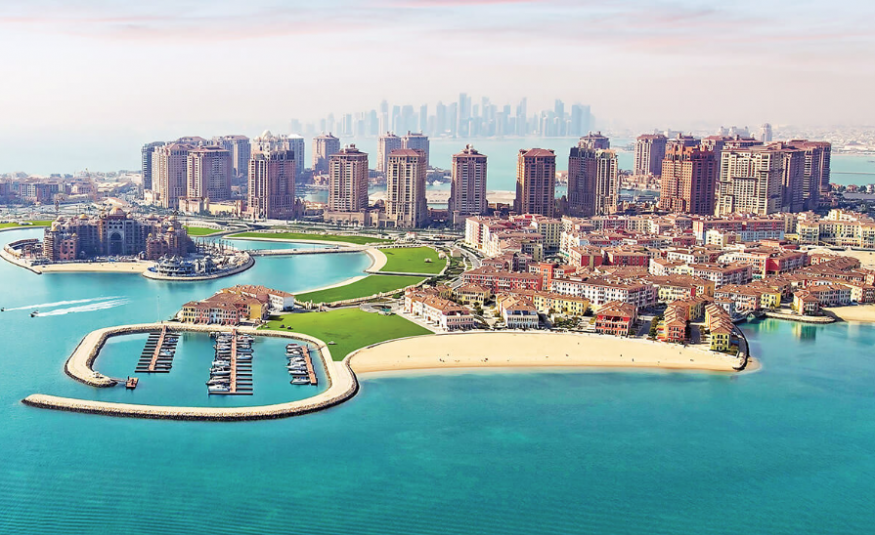Qatar sits in a fast-growing region for international exhibitions. But how is it going to differentiate itself from the countries that surround it? EW takes a closer look
It is common knowledge that Qatar is one of the richest countries in the world, perhaps also that its indigenous residents are out numbered four to one, and that it will be host to the World Cup in 2020. What is less widely known is its rich Arabic heritage, or that it is a wonderful place to learn about Islam, or that if you arrive at the right place, at the right time; it is possible to watch a horse enjoying a Jacuzzi.
The emirate suffers from something of an identity crisis. On the one hand the corporation at its core, the Qatar Foundation, is promoting national education and understanding, as well as the generation of a sustainable modern business culture that will ensure Qatar becomes a fixture on the global industrial landscape. On the other, it is rich on the back of oil and dependent on outside help and low-rent foreign labour for its very existence, two rather globally unfashionable factors for global consumption.
The Qataris are aware of this. The emirate’s National Tourism Sector Strategy 2030 has been conceived on the back of lengthy consultation to draw the world’s eye to its growing tourism offering, its roots in family and education, and emerging strength in the sports, business and health and wellness sectors. Both the Qatar Foundation and the Qatar Tourism Authority are working hard to ensure the world see the emirate for it wishes to be, and not for what the mainstream media paint it as.
Core to this is the development of its international business events industry. So what about the actual facilities? In terms of large exhibition and congress space; the Qatar National Convention Centre (QNCC), designed by Arata Isozaki in reference to the holy Islamic Sid rat al-Muntaha, or sidra tree, has been the city’s leading space for large congresses and exhibitions since it opened in 2011.
Today however, there is another choice for international event organisers in the shape of the newly opened Doha Exhibition Convention Center (DECC). The new venue, dedicated to tradeshows and exhibitions, is closer to the majority of Doha’s hotels and offers some of the most advanced audio-visual facilities in the world.
The venue offers a gross area of 29,000sqm, that includes five exhibit halls with 18-metre ceiling heights and 96-metre column-free spans that run 290 metres in length. For those driving, the venue offers parking space for 5,000.
The heart of Doha’s event culture can be found at the Katara Cultural Village, a compound that aims to present Qatar’s traditional heritage in a location typical of the region’s architecture.
Cultural facilities here include a spectacular amphitheatre with carefully crafted acoustic delivery, state-of-the art theatre with one of the more impressive faux-outdoor ceilings you’re likely to experience, an opera house, libraries, academic facilities and restaurants. The development planned here in the coming years includes a residential development, golf course and children’s zone.
The whole area has been conceived with a holistic attitude in mind. A one-stop entertainment destination that aims to present an authentic Qatar experience for thoe attending the operas and theatre performances. A walk around the complex will bring you to the doors of cafes, two mosques and a public beach replete with water sport facilities.
Qatar’s rich equestrian heritage can be experienced at the Al Shaqab equestrian centre, located at the heart of the Qatar Foundation campus. Founded in 1992 by Sheikh Hamad Bin Khalifa Al-Thani, the Emir of Qatar, Al Shaqab‘s fine Arabian horses are among the best show animals in the world and to give attendees a chance to see the way they are honed and, for want of a better word, pampered, will in turn give them a greater understanding of one of the Qataris most treasured traditions.
For those hoping to delve further into the history of Qatar, and experience one of the city’s true iconic buildings, the Museum of Islamic Arts is a fixture that cannot be missed. Designed by the prize-winning architect I.M. Pei, it comprises a grand five-storey building and a large central courtyard. Both provide ample space for events, and the building’s central atrium is an ideal space for large group receptions up to 800 standing or 600 seated.
The top floor offers further banqueting or workshop opportunities, with a fine view across the Corniche and a Michelin Star restaurant experience, while the museum’s sound-proofed auditorium can seat 195.
While Qatar is most famous for the Hotels such as its iconic Sheraton, there are many others building a following among event organisers. The St Regis Doha sits at the heart of West Bay, adjacent to Pearl Island and close to the Diplomatic Area. In addition to more than 350 rooms, the hotel has 6,000sqm of exhibition and conference space, spread through two banqueting halls just five minutes walk from each other.
Qatar is less notable for its tourism offers than some of the surrounding countries. However, there is still plenty for attendees or delegates to do during a business event in the city. A cruise on a dhow boat can plug you into the heart of Bedouin tradition. These decorated wooden boats have recently become licenced and protected due to the strong interest from international visitors, and by day or night, a serene tour enjoying local coffee and tea offers a memorable view of the city from the water.
Qatar has much to offer the international event community, and its appetite for new business and drive in terms of industrial and academic development, makes it a Middle Eastern destination that punches considerably above its weight.






